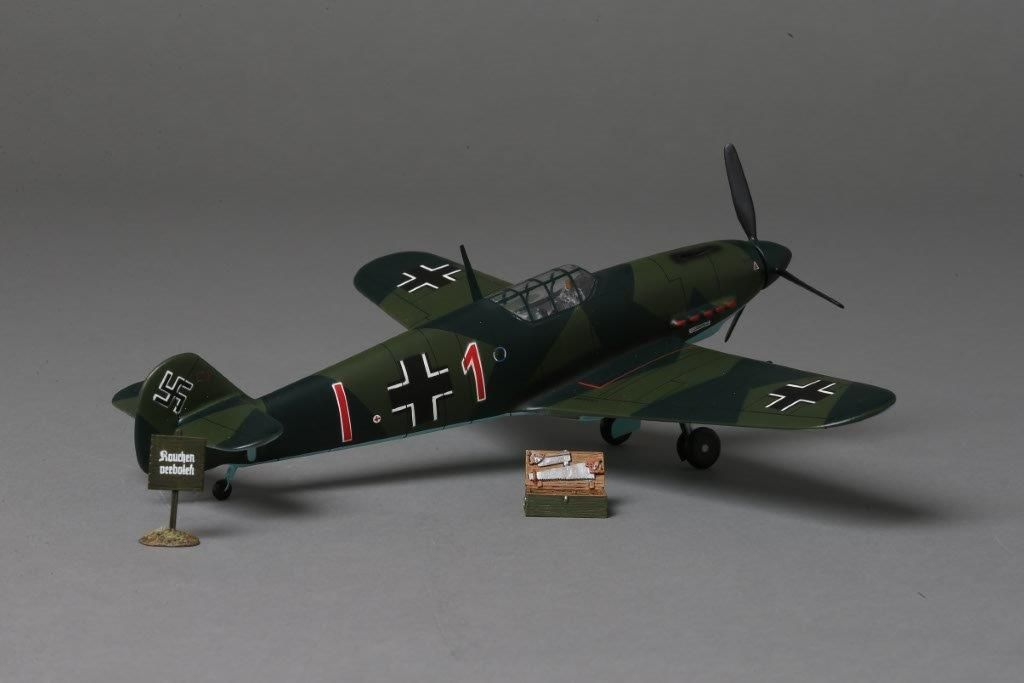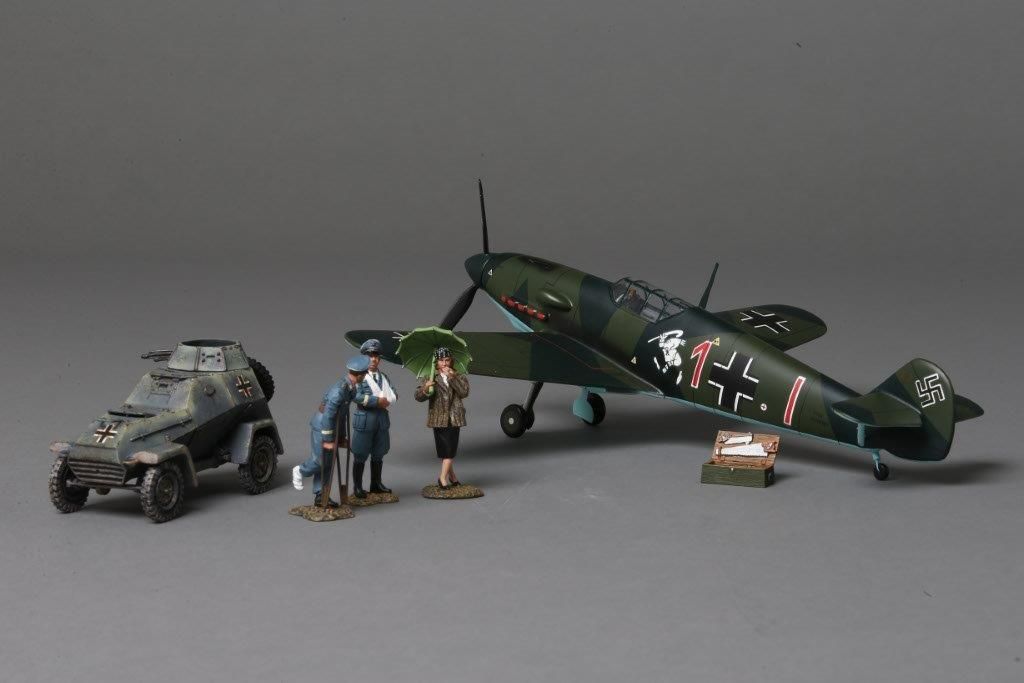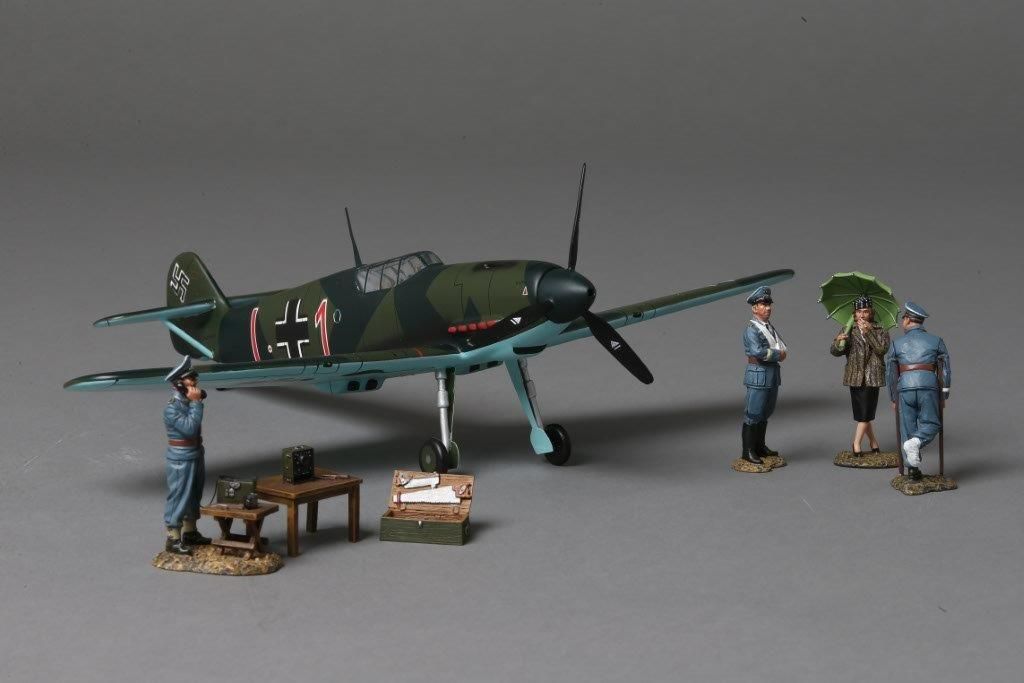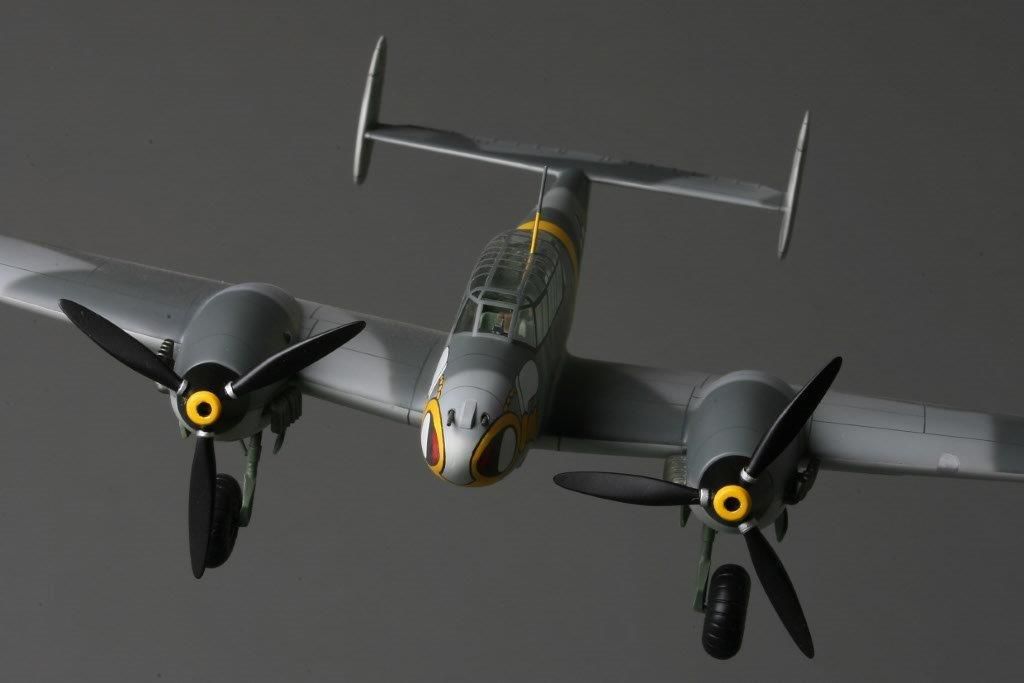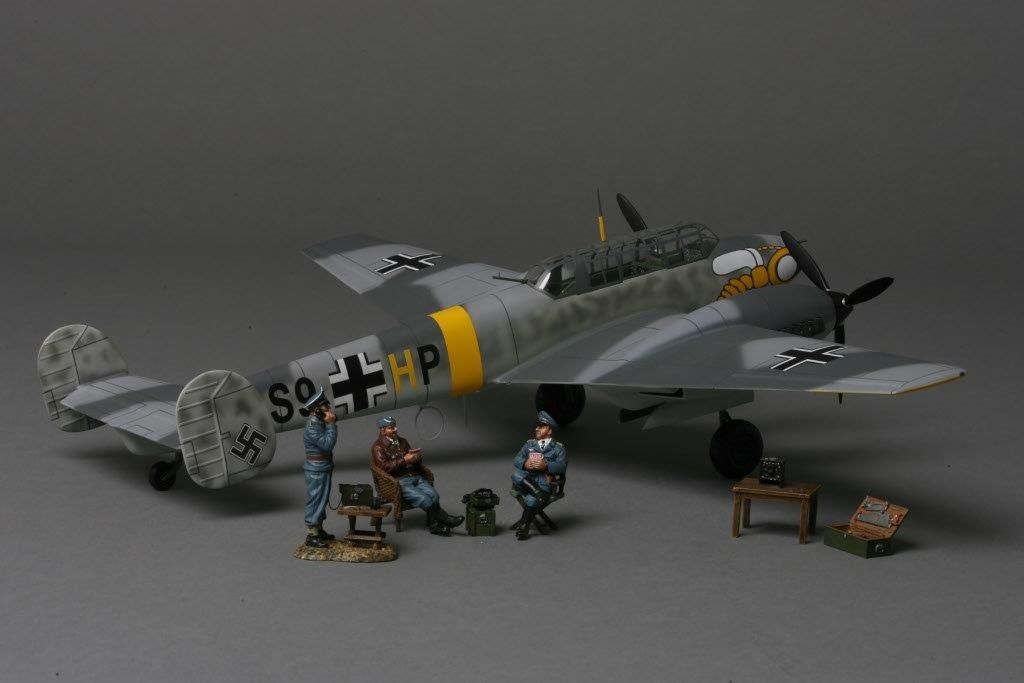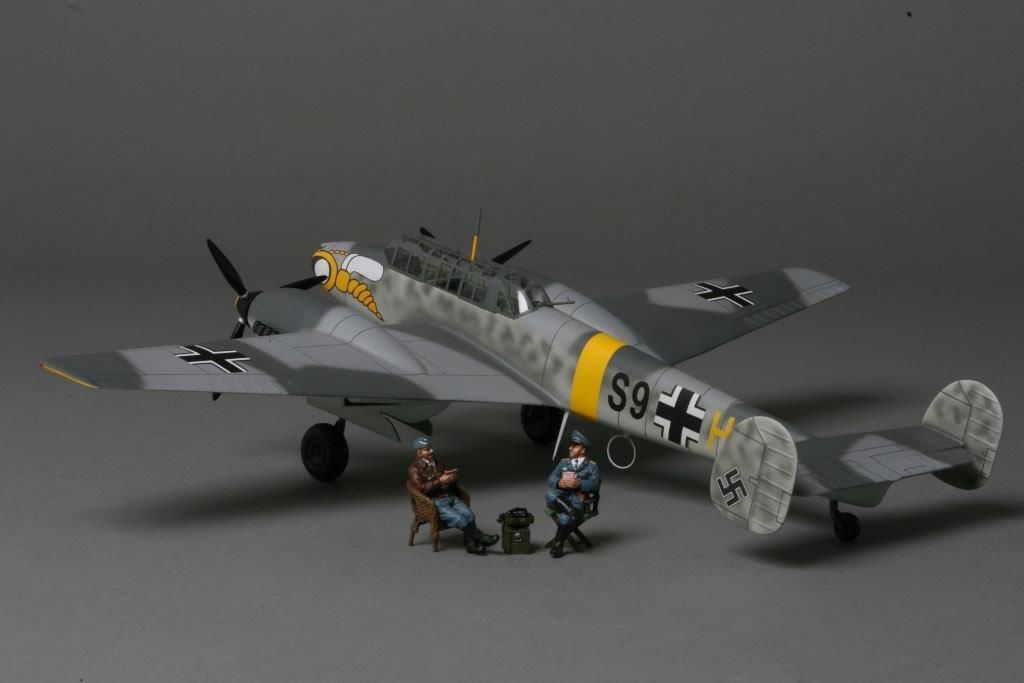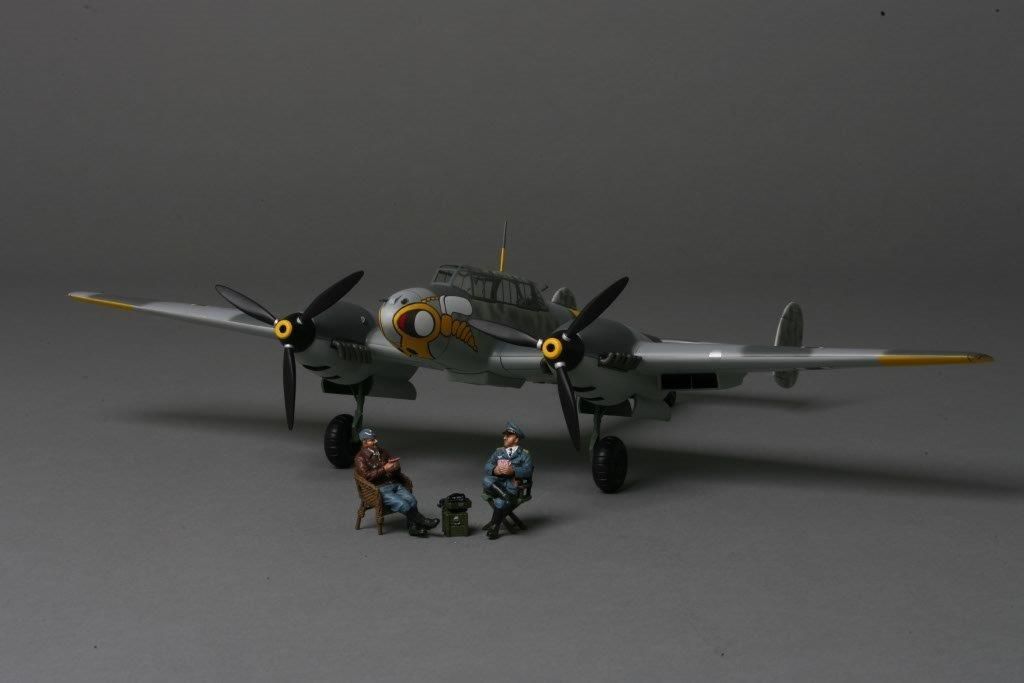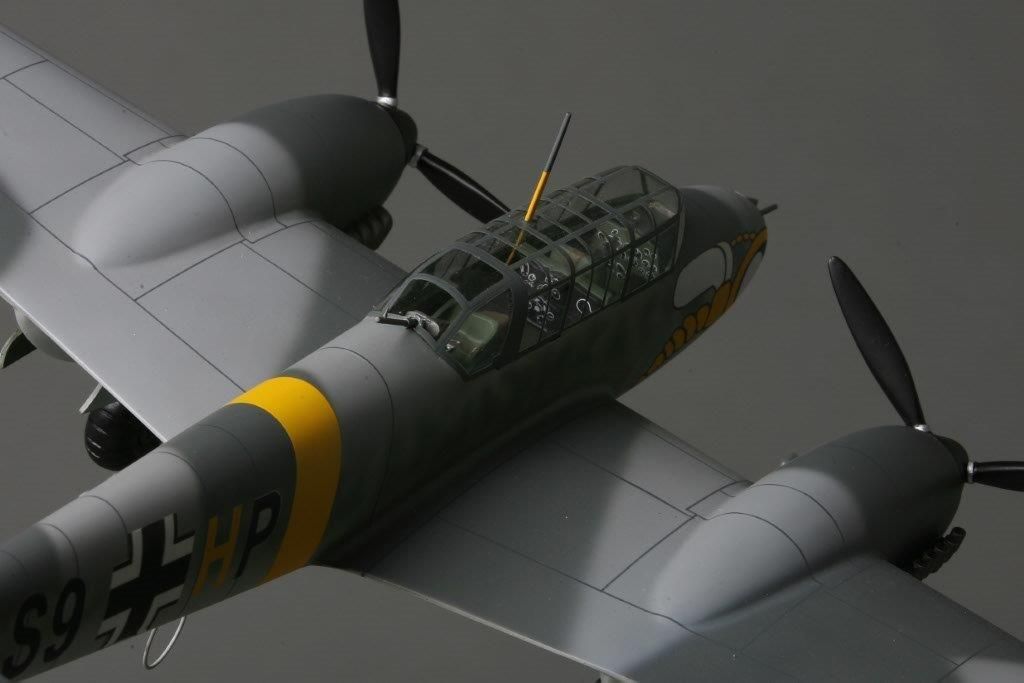Dear All
Welcome to our final notes for 2015 in which we bring you 3 absolutely
cracking German aircraft from WW2 all hand carved in wood. Each one takes
around 6 months or longer to complete from start to finish and is a truly
limited edition. As with all our aircraft you have the option to pay over 3
months or all upfront if this is your preferred method of payment.
WOW046 The Messerschmitt BF 109 (ME 109) was a German fighter aircraft that
formed the Luftwaffe's fighter backbone at the beginning of the war and
right up until its conclusion in 1945. Designed by Willy Messerschmitt and
Robert Lusser in the 1930's, it was one of the first truly modern fighters
which featured an all metal monococque construction, armoured canopy and
retractable landing gear. The BF 109 first saw combat in the Spanish Civil
War where it performed admirably albeit against somewhat outdated Republican
forces. Originally designed as an interceptor, later models were designed as
bomber escorts, fighter bomber and ground attack aircraft. Several of
Germany's Allies operated the BF 109 during and after WW2 and it still
remains the most produced fighter aircraft of all time with nearly 34,000
examples having been produced. Our Messerschmitt BF 109E is one flown by
Eduard Neumann an ace with 13 kills (2 during the Spanish Civil War) during
the course of his career. Neumann was born in 1911 in Austro Hungary, his
family moved to Germany after WW1 and this was where he learned to fly as a
glider pilot and then in the fledgling Luftwaffe as a fighter pilot, which
was still under secret construction. Neumann's first kill of WW2 was an RAF
Blenheim before his unit was posted to Yugoslavia and then to North Africa
where his scores steadily mounted. He remained in the Southern European
theatre for the rest of the war, where he ended his career as the commander
of fighter forces for Italy. We have depicted Neumann's aircraft as it
appeared during the opening stages of the war in 1939 in a very attractive
two tone green camouflage whilst he was serving with JG 26 Schlageter. The
unit emblem was of the hapless cartoon character 'Adamson' drawn by Swede
Oscar Jakobsson, interestingly 'Adamson' has often been described as the
inspiration for Homer from the Simpson cartoon series! Limited edition of 5
pieces and priced at $499, all figures shown in the photos are for sale
reference purposes please note and are not included with the aircraft.
WOW050 The Messerschmitt BF 110 was a twin engine heavy fighter armed with 2
x 20mm cannons, 4 x 7.92mm machine guns at the front and 1 x MG fitted to
the rear for defence. The BF 110 served with success in the early stages of
the war during the Polish and France campaigns but was hopelessly outclassed
by the RAF's fighters during the Battle of Britain where is served as a
bomber escort. Redeployed as a nightfighter in the West the BF 110 was well
suited to this role, especially when flown by aces like Major Schnaufer who
claimed 121 victories solely in this type of aircraft. In other theatres
such as the Balkans and the Russian front, the 110 soldiered on as a ground
attack/fighter bomber and performed admirably. A 37mm cannon could also be
fitted under the belly of the BF 110 which made this a formidably armed
aircraft when used in the ground attack or bomber interceptor role. The 110
was also adopted by Italy, Romania and Hungary amongst others with over 6000
aircraft being produced during its operational career. The BF 110 is one of
the largest aircraft we have made in 1/30 scale with the original aircraft
having a 53ft wingspan and over 40 ft in length. Our aircraft is from
Zerstorergeschwader 1 (ZG 1) a unit that had carried the Wasp art nose-work
on its aircraft since the Norwegian campaign in 1940. Equipped with the 110
during the French and Russian campaigns, a huge amount of ground targets
were claimed by the units pilots before switching some of the units aircraft
to the troublesome ME 210 and latterly the ME 410. Some of the units
remaining 110's were also fitted with the 37mm underbelly cannon and
utilized in the anti tank role at Kursk with mixed results. Towards the end
of the war ZG1 were employed in the Defence of the Reich taking on the USAAF
bombers with often disastrous results. The unit was finally disbanded in
July 1944 with its personnel being deployed to other Grupen. This is a
limited edition of 10 aircraft worldwide, comes free with the 2 seated
pilots playing cards as per the pictures and is priced at $799 plus P&P.
WOW051 Arado 234 the world's first operational twin engine jet bomber,
although originally designed as a high speed reconnaissance aircraft the 234
was a remarkable aircraft way ahead of its time. Feedback from pilots was
that the aircraft was a delight to fly and the forward vision being
excellent due to the fully glazed nose, a periscope was fitted for rearwards
vision. The first Arado 234's had no undercarriage and employed a
trolley/skid arrangement for takeoff and landing, much like the Komet 163.
However the need to recover an aircraft from where it landed in a timely
manner after the end of its mission, necessitated the fitting of a tricycle
undercarriage. Not only this but landing a bomber on a skid on wet grass was
often compared to landing on a soap bar, but with no means of stopping!
Several reconnaissance flights were carried out over the UK with impunity
and the most famous attacks by the aircraft in the bomber role were the ones
on the Bridge at Remagen in 1945. Only 220 Arados were completed before the
war ended but several variants were under development including a night
fighter and a two seater variant with four engines fitted, another proposed
variant included inverted swept back wings which really would have been
something to see! This is as far as I know the first 1/30 scale model of
this aircraft and is a surely going to be a unique addition to anyone who is
a serious aviation collector. Comes complete with fully detailed cockpit,
bomb load, free FJ010 sentry figure as per the attached figures and is
priced at $850 plus P&P with a limited edition of 10 pieces available
worldwide.
Thank you for taking the time to read this and we would like to wish you all
a happy Christmas time with your family and friends and will speak to you in
the New Year with news of more goodies in January.
The Gunn Team
